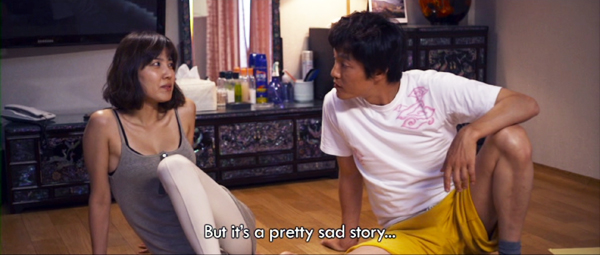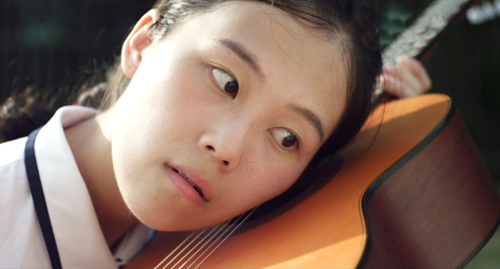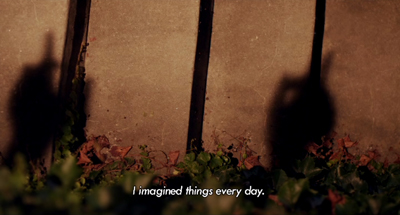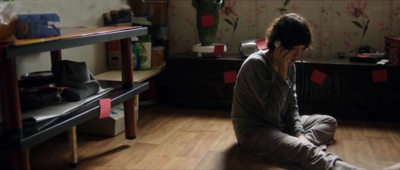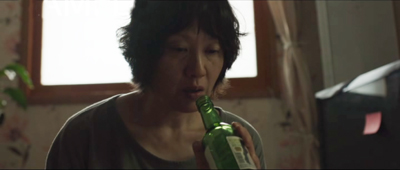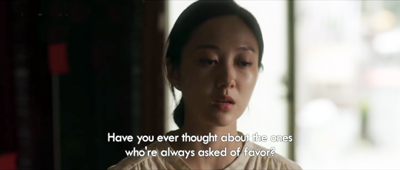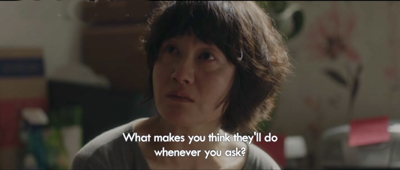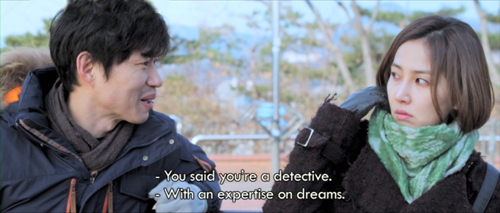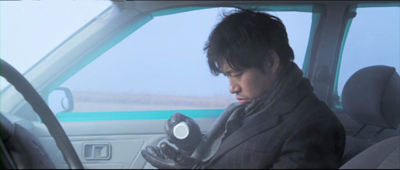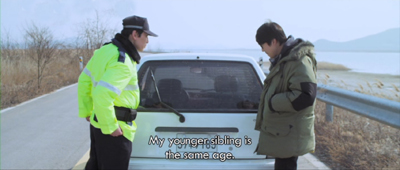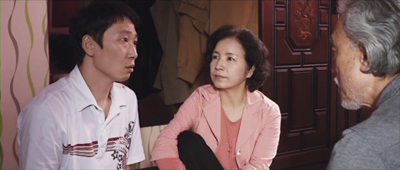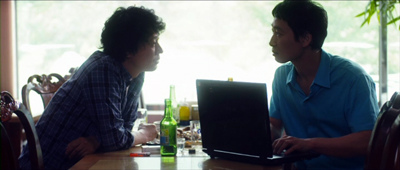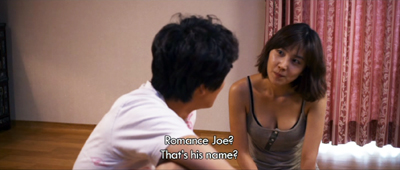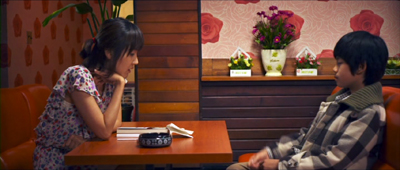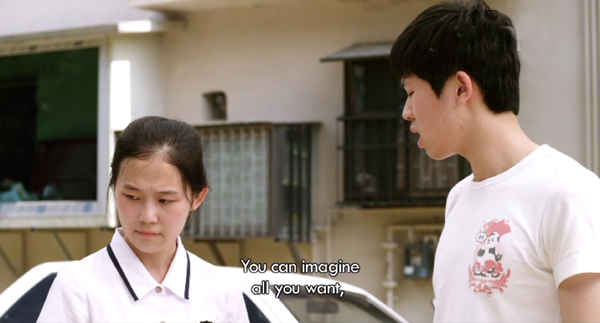Patchwork imagination: Lee Kwangkuk’s framed and frayed stories
Sunday | December 10, 2017 open printable version
open printable version
Romance Joe (2011).
DB here:
Seeing Hong Sangsoo’s The Day a Pig Fell in the Well at the 1997 Hong Kong Film Festival didn’t convince me that he was a major talent. That happened two years later, when I saw The Power of Kangwon Province at the same event, and again at Cinédécouvertes in Brussels. At Hong Kong, and again at Brussels, I saw The Virgin Stripped Bare by Her Bachelors (2001). In those days, Hong made a movie every year or two, like your ordinary director.
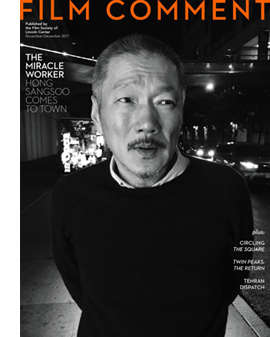 I was impressed. I included Kangwon Province as an example of modern South Korean cinema in our second edition of Film History: An Introduction (published 2002), and it’s still there in our upcoming fourth edition. A year earlier, I had brought Hong to our Wisconsin Film Festival for what I think might have been his first retrospective–if three films count as a retrospective. And I drew on a scene from The Virgin as an example of subtle ensemble performance in Figures Traced in Light (2005). And I contributed an essay to Huh Moonyung’s anthology Hong Sangsoo (Kofic/Seoul Selection, 2007).
I was impressed. I included Kangwon Province as an example of modern South Korean cinema in our second edition of Film History: An Introduction (published 2002), and it’s still there in our upcoming fourth edition. A year earlier, I had brought Hong to our Wisconsin Film Festival for what I think might have been his first retrospective–if three films count as a retrospective. And I drew on a scene from The Virgin as an example of subtle ensemble performance in Figures Traced in Light (2005). And I contributed an essay to Huh Moonyung’s anthology Hong Sangsoo (Kofic/Seoul Selection, 2007).
My apologies for playing an egocentric cinephile game. Boasting aside, though, I want to express genuine satisfaction at Hong’s sustained creativity. He has become prolific but not stale; every film offers the viewer and the filmmaker himself fresh challenges. What attracts me is his simplicity of means and the way he devises narrative games that make satiric points (usually about male vanity) without seeming mannered or precious.
He has gotten ever-greater recognition, as evidenced by the current Film Comment cover story, Dan Sullivan’s perceptive appreciation of his three (!) 2017 releases. Even more startling is a real high-culture breakthrough. In its print editions over the years, The New York Review of Books has resolutely ignored Kiarostami, Kitano, Wong Kar-wai, and Hou Hsiao-hsien, to pick some exceptional directors who hit their strides in the 1990s. But the 7 December NYRB boasts Phillip Lopate’s wide-ranging essay introducing Hong to its readership.
So he’s one of those overnight successes who took twenty years. Moreover, it’s gratifying to see that recently this body of work has had some influence, most apparent for me in the work of Lee Kwangkuk. Today I want to offer some notes on an intriguing, quietly ambitious filmmaker working in the shadow of Hong.
Two shorts
Hard to Say.
Lee learned on the job, assisting on Hong’s Tale of Cinema (2005), Woman on the Beach (2006), Like You Know It All (2009), and Hahaha (2010). His films have the crystalline cinematography and color design of Hong’s, and he has learned how to make movies that consist largely of two-person dialogues, shot in long, poised takes punctuated at just the right moment by a close-up. He has cast several actors who have appeared in his mentor’s films.
As with Hong, Lee’s characters tend to be artists: filmmakers in Romance Joe (2011), actors in A Matter of Interpretation (2014), and novelists in A Tiger in Winter (2017). They have romantic liaisons, but they also spend inordinate stretches of time wandering streets, hanging out, and drinking immense amounts of soju. And like Hong, Lee has experimented with storytelling formats.
Most obviously, there are embedded stories. Early and late Hong explored a modular narrative, broken into two or three blocks, with story lines splitting or converging. At first blush, Lee developed this in a more traditional direction, inserting stories within stories, Russian-doll fashion. His two favored forms of this are the flashback and the dream.
We get both in the short Hard to Say (2012). In a playground, a young woman declares her love for a young man, who puts her off, suggesting he’s been attracted to another woman, a guitarist. “You can imagine all you want,” he says, but he’s not going to be her boyfriend.
Saddened, the woman finds a guitar abandoned in the woods, and starts to listen to it. Cut to the boy, who’s now searching for the singer who played a song he loves. (Are we in a flashback?) He finds the young woman of the first scene, but as a different character, a poised and meditative guitarist. She tells him, via a flashback, how her father forbade her to learn the guitar, so she learned to play it in her imagination, in shadow strums and plucks.
When she finally got an instrument, she found she could play it perfectly. After her tale ends, she asks him to hug her.
Abruptly we’re back on the playground, where the original young woman is waking up from sleep. Now the boy is interested in her and offers to walk her home. The guitarist’s claim for the power of imagination is vindicated.
The fact that we’re not sure where the girl’s dream begins is conventional, but also characteristic of the way that Lee frays the boundaries of his embedded stories. And the fact that the boy has fallen in love with the girl while in her dream shows the porousness of the subjective stretch that’s embedded. Hard to Say provides a miniature example of how Lee’s characteristic plot structure prompts us to see stories within stories, and then refuses to keep them sealed tight. Early in a film, we might be led to expect a solidly implanted flashback, but soon the whole frame is revealed as less objective than we might think.
The transforming power of the imagination is given a more somber treatment in another short, Soju and Ice Cream (2016). A young woman fruitlessly selling insurance policies meets an old woman who asks her to fetch some ice cream in exchange for a basket of soju bottles. In one bottle our heroine finds a slip of paper, a sort of reformation vow written by the woman: “Do not give up. Make a plan. Stop drinking. Keep smiling.” Suddenly, in what appears to be a flashback, we’re watching the old woman write the note, in an apartment tagged with Post-its. She gets a phone call from her landlord evicting her.
The old woman casually blows into a bottle she’s just drained and, as if by magic, the girl hears and feels the breath.
Now able to listen to the old lady’s phone call, she discovers that the woman’s daughter treats her as harshly as she has treated her own mother.
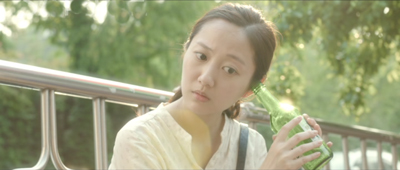
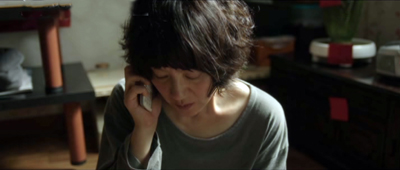
The girl bursts in on the old woman–in the past? in her mind?–and pours her resentment of her mother into a criticism of the old lady for taking loved ones for granted.
Back at the ice-cream stall, she snaps out of her reverie to discover that the bottles are gone and the old woman is long dead. This touch of the fantastic has given her the chance to empathize with her mother and, in a long coda, to implore her sister to heal the family wounds. Here imagination yields not wish fulfillment, as in Hard to Say, but the recovery of duty and devotion.
Dream on
A Matter of Interpretation.
A Matter of Interpretation tackles dream narratives on a bigger scale. Yeon-shin, an actress, stalks out of a brutally awful avant-garde play because, among other problems, there is no audience. As she wanders the city, she recalls breaking up with her boyfriend a year or so ago. Now, on another bench, Yeon-shin meets a detective who claims to be able to interpret dreams. So she tells her dream of attempting suicide in a car halted in a field of goldenrod.
But a thumping from the trunk interrupts her, and she finds a man tied and gagged there. He’s the detective who had asked her about the very dream he’s now in. In a flashback he explains he found himself in the car, contemplating suicide, before she arrived.
We’re left with a dream that contains a flashback, as in Hard to Say. But it’s not a veridical one, since the man finds the pill bottle empty and Yeon-shin finds it full. So it’s a dream within a dream? Moreover, her dream features a character whom the dreamer did not know…until she recounted the dream. We’re entitled to take what we see as a version of what Yeon-shin told the detective, I suppose, with him plugged into the role that some faceless man played in the original dream. Or maybe she’s just fibbing. Or maybe what we’re seeing is a free elaboration of the situation, a startling variant without any source in her mind. The uncertainty, of course, is the point.
In any case, the detective interprets Yeon-shin’s dream as being about her dumping her ex, with the recurring car symbolizing her career failure. And now he explains his skill as a dream interpreter through a flashback to his caring for his ill sister, and her recounting a dream about a customer.
As the film goes on, we get to meet Yeon-shin’s boyfriend, Woo-yeon, through a string of flashbacks framed by her telling. Later in the day, he winds up on the bench with the detective, who probes one of his dreams–in which, again, the car and the detective appear.
Back in reality, in a string of precise repetitions, Woo-yeon follows Yeon-shin’s wanderings through the streets. And that night, exhausted and depressed, she has another dream that brings Woo-yeon back into her life.
Like Hard to Say, A Matter of Interpretation offers some legible time shifts–conventional framing situations for flashbacks–in order to give the imaginary scenes escape hatches, as the detective slips into the dreams recounted by the lovers. By the end, we’ve been prepared for their paths to cross, not least because Yeon-shin’s final dream presents a reconciliation she seems to yearn for.
Telling it backwards and sideways
There aren’t any dreams per se in Romance Joe, but it’s no less committed to the zigzag contours of the imagination. The plot presents several different time schemes (although some may be fictitious), and they don’t stay neatly separate. Again, there’s a benevolent contamination of one zone by another.
A young filmmaker has disappeared. His parents come to his friend Dam Seo to investigate.
Again, what seems to be a tidy flashback shows Dam meeting with the son, who rants that he’s run out of stories.
In a standard film, we’d return to Dam Seo and the parents for more discussion. Instead we’re now in a village, where a third filmmaker, director Lee, is dumped by his producer and ordered to conjure up a story pronto. Lounging in the hotel, Lee is brought coffee by a waitress who admires one of his films, A Good Guy, for its “critical approach to narrative.” Pleased, Lee asks her to stay the night, and she agrees, for money. He reminds him, she says, of another director who visited the town, the man she calls Romance Joe.
Joe, it turns out, is the missing, unnamed director the parents are worried about; but it’s not at all clear that Dam Seo is narrating this encounter of Lee and Rei-ji. How could he know about them? His flashback simply bleeds into a new set of scenes with these other characters.
Rei-ji tells of Joe’s coming to town, and in flashback we see him wandering the streets, then checking into a hotel and trying to write. Despondent, he starts to slash his wrist. That scene is interrupted by a flashback to Joe as a teenager finding a young woman, Cho-hee, with slashed wrists in a forest. He takes her to the hospital. At this point, the flashback-within-a-flashback ends. Rei-ji, delivering coffee, finds the bleeding Joe and hurries away.
Here, about thirty minutes in, we finally return to the initial situation of Dam Seo talking to the parents about their missing son. The father is dismissive: “All these kids today wasting their lives on film.” But the mother is sympathetic to Dam Seo and asks about his work. He says he’s working on a story, and he tries it out on them. This launches what can only be called a hypothetical sequence, about a boy visiting a town in search of his missing mother. But soon enough the boy encounters Rei-ji, the coffee-girl/hooker.
And the boy’s tale frays further when it’s interrupted by a scene of Cho-hee in the forest, starting to slash her wrists and then being discovered by the teenage Joe. There’s crosstalk among what ought to be distinct realms–Dam Seo’s script versus Cho-hee’s reality, one speaker’s story versus another’s.
The rest of the film will intercut these story lines, with some peculiar interferences. Rei-ji tells Lee of meeting Joe, who says he has no more stories and is tired of them. But after spending the night with her he tells (or seems to tell) the story of himself as a teenager, and his love for Cho-hee. The stories intersect unexpectedly, with the vagabond boy revealed to be present when Rei-ji discovers Joe’s suicide attempt. Again, though, the boy is initially presented as purely fictitious, a character in Dam Seo’s uncompleted screenplay. A similar disconnected connection involves the name “Romance Joe.” It’s the nickname Rei-ji gives the anonymous director she meets, but much later in Cho-hee’s story, it’s the title of the film Joe as a student is making in Seoul. By canons of plausibility, Rei-ji could know nothing of this.
All this is hard to visualize in my prose, but I think you can see how the firm outlines of flashback episodes or embedded tales become hazy. By the end, two filmmakers want to film this tangled tale. Director Lee sees that it could become a thriller. Joe, encouraged to tell his own story by Rei-ji, seems to be rejuvenated and wants to revisit the forest of his childhood. Yet it’s not clear that either will make the movie–especially after we hear Rei-ji confide to another waitress that you just have to tell your clients what they want to hear. (So is her story about Romance Joe’s writer’s block calculated to mend Lee’s own?) The film’s final image, harking back to an Alice in Wonderland motif, suggests that the whole patchwork of stories might be pure fabulation.
Far from being a simple imitator of Hong, Lee has taken some of his experiments in fresh directions. Some of these involve abstract form, others style; his shots tend to be prettier, and he’s more likely to break a scene into reverse angles. Other differences lie in the emotional tint of the film. Hong’s films are usually comedies, however mordant. Lee’s films have a grimmer tone. Although Hard to Say is light-hearted, Soju and Ice Cream, revealing family breakup, job insecurity, and alcoholism, modulates into tearful frustration. The comic suicide attempts of A Matter of Interpretation are balanced by the melancholy prospect of aborted artistic careers and disrupted love affairs. When Jeon-shin sees the detective again in the final stretches of the film, he ignores her; their momentary friendship is over.
Romance Joe offers something grimmer than Hong’s comedy of bad manners. At the core of the story action is the sad tale of Cho-hee, scorned by her classmates, oppressed by her parents, and desperate to flee town. After her wrist-cutting episode, she and the young Joe flee to Seoul for a night, but in confusion he abandons her. She too returns home, only to leave again when she becomes pregnant (by whom?). She becomes a Seoul prostitute. Through a chance meeting Cho-hee finds that her life has become a source for Joe’s student film. She seems cheered by this, but we never see her fully grown. Joe must confront not only his feeble career but his long-ago failure to honor his promise to Cho-hee: “I’ll always protect you.” Like her and Rei-ji he bears the stigmata of a botched suicide.
This somber tone has wholly taken over Lee’s recent A Tiger in Winter. Thoroughly linear in construction, with no embedded tales, it probes an unhappy couple: a failed novelist living on the margins and his alcoholic former girlfriend, who’s found success but now suffers writer’s block. It’s a chronicle of yuppie pathos and pain in chilly urban landscapes, where we find anomie and temps morts and, again, suicide.
“In Romance Joe,” Lee remarks, “I was focused on someone that was committing suicide because they didn’t have a story any more, and in A Matter of Interpretation she didn’t have an audience any more.” In A Tiger in Winter, the characters have run out of stories and audiences. Clearly, for Hong, your prospects are bleak when you can’t summon up the redeeming power of imagination.
Thanks to Lee Kwangkuk and Tony Rayns for help in preparing this entry. Romance Joe was once available on South Korean DVD, but apparently no longer. The only Lee Kwangkuk film currently on video, as far as I know, is Soju and Ice Cream, part of an omnibus film for the Korean Human Rights Commission. Lee’s oeuvre is a real opportunity for an ambitious streaming service.
My quotation from Lee comes from an easternkicks interview. Our entries on Hong Sangsoo are here. One of them is a 2012 first impression of Romance Joe. On embedded stories in general, there’s this.
Hard to Say (2012).












